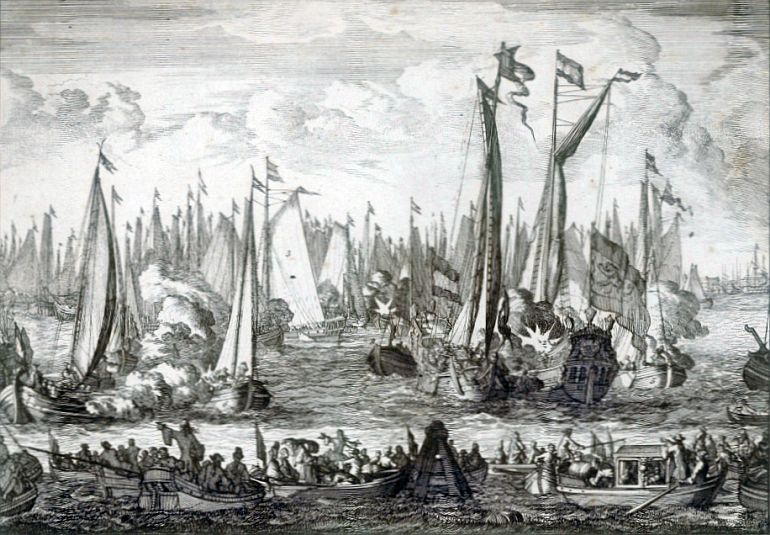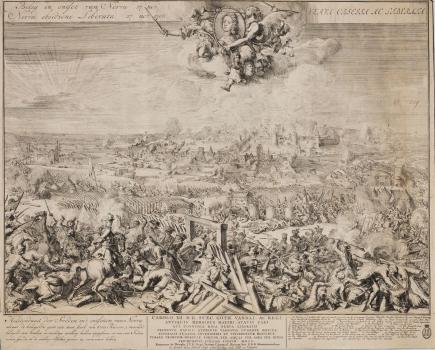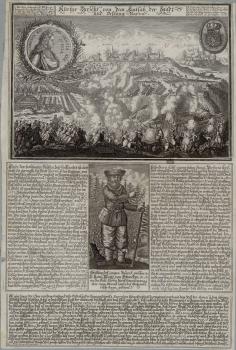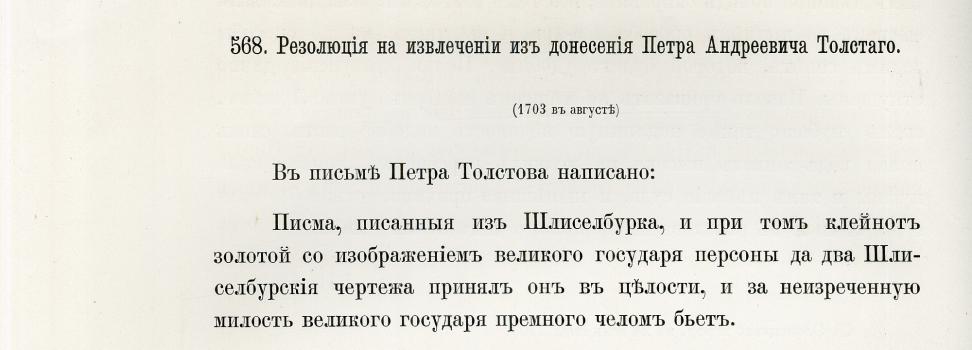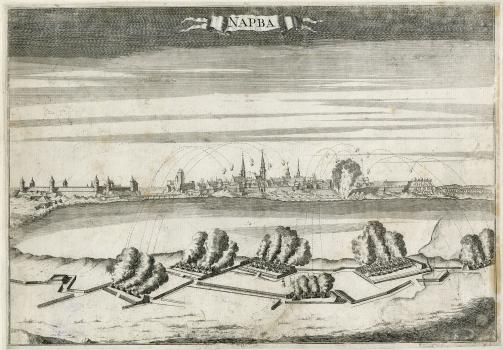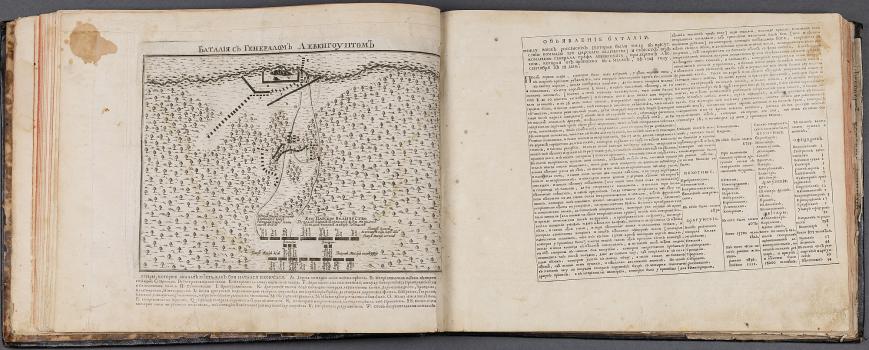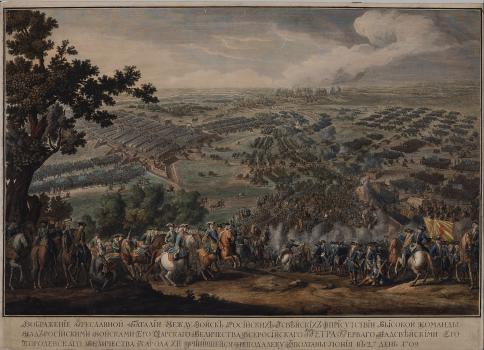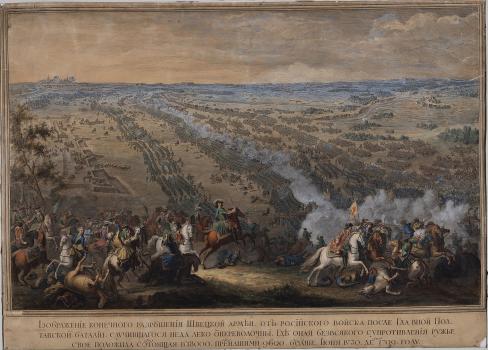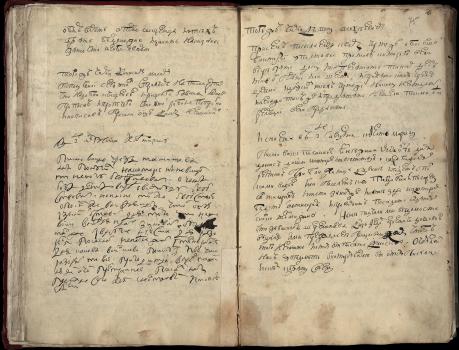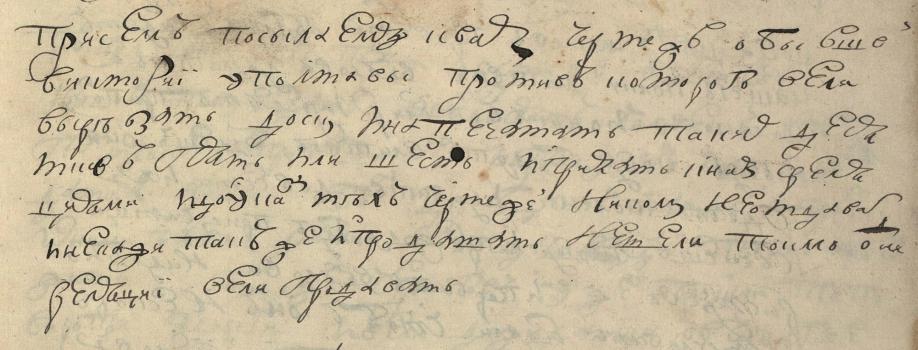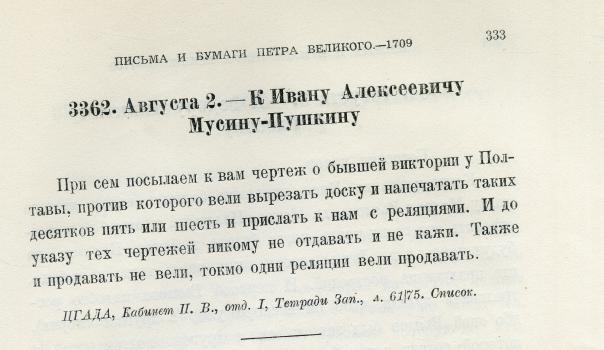"For the knowledge of all the people": engravings of the time of Peter the Great in the collection of the National Library of Russia. Marking the 350th anniversary of Peter the Great
Northern War: Land Battles
In 1700, Peter the Great went against Sweden at Narva. He tried to take this important military and commercial city under control. Thanks to engravings, contemporaries in Europe were well aware of the Azov victory, and just as quickly they learned about the defeat of the Russian forces at Narva. In Germany, where there was a relatively large media presence, handwritten "fly sheets" reported this news immediately. A number of illustrated reports, covering this hot topic, appeared.
On display are two such news sheets. The first was published by Josef Friedrich Leopold in Augsburg, the second one – by the publishing house of the Johann Felsecker's heirs in Nuremberg. Both sheets feature similar battle engravings, supplemented with a profile of Charles XII, and the Augsburg edition also depicts a peasant who helped the Swedish armys as a guide.
The victory of Charles XII near Narva was depicted not only in the “fly sheets”, but also in the spectacular battle engraving The Siege and Liberation of Narva. What's interesting is its similarity with the Taking of Azov - both engravings feature the military triumphs of the rulers, but the Azov events were engraved by Schonebeck, and the Narva ones by his teacher Romeyn de Hooghe.
With the famous cartographer, Nicolaas Witsen, Mayor of Amsterdam and a politician, Peter the Great met when his visiting Holland during the Great Embassy in 1697-1698 and since then he was in correspondence with him.. Witsen’s reply, dating June 22, 1703, also survives, “The drawing of the captured Shlisselburg fortress, strong and surrounded by water, was transferred to me by decree of Your Majesty, and is kept among the most pleasant things to me, and its appearance daily reminds me and constantly shows me the courage and fighting abilities of the Russian soul, with the help of which it was taken.
With the assistance of Nicolaas Witsen, Mayor of Amsterdam, Peter the Great engaged Cornelius Kruys, the future admiral of the Russian fleet (since 1721. Kruys entered into the Russian service as vice admiral in 1698. From the autumn of 1702 until 1704, Kruys, following the instructions of Peter the Great, stayed in the Dutch Republic. He supervised the training of 150 Russian youths, hired new officers and sailors, and purchased weapons and ammunition. (See the letter of Peter I to Kruys). In a reply letter to Peter I, Kruys wrote on April 19, 1703, that he was spreading around his "good friends" the news about the victory of Russian weapons, which returned the Sovereign's "ancient hereditary" possession.
The Battle of Lesnaya, in which Russian army defeated Adam Lewenhaupt's column, which was going to join the main Swedish troops under the command of Charles XII, took place on September 28, 1708.
20 days later, on October 18, 1708, Peter I sent a drawing of the battle to his son Grand Duke Alexei Petrovich of Russia. The drawing was accompanied with an instruction to make an engraving after it with an explanatory text in Russian and Dutch. In a response letter on October 24, 1708, Aleksey Petrovich wrote that he had already given the drawing to Picard for immediate making an engraving.
